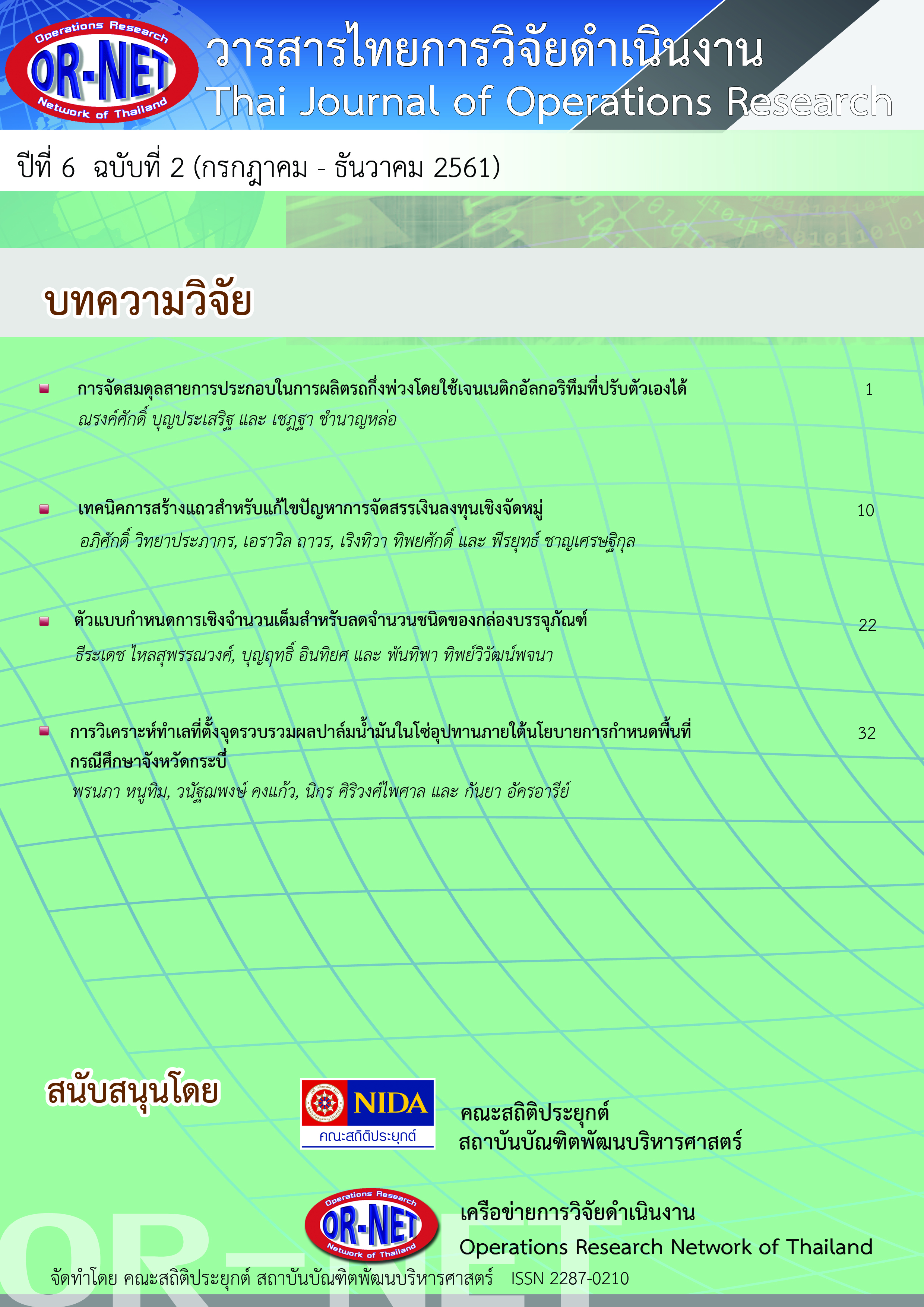Integer Linear Programming Models for Reduction of Number of Types of Packing Boxes
Keywords:
Types of boxes, Packing, Integer Linear ProgrammingAbstract
In packing process, many types of boxes may be used if a factory has several kinds of goods or products. The costs of having many types of boxes can contribute to higher manufacturing costs. However, the costs can be lowered if the number of types of boxes is reduced by substituting one type of box with another available type of box within reasonable criteria. In this paper, we use a criterion that a particular type of box can be replaced by a bigger box (bigger in all dimensions) if the difference in percentage of the length of each side of the box compared with a bigger box does not exceed a specific value. We propose two integer linear programming models which relate to reducing the number of types of boxes under this criterion. The first model is a mixed integer linear programming model which is to minimize the value of the bound of the difference in percentage of the length of each side of the box compared with a bigger box, with the specified number of boxes to be discarded. The second model is a binary integer linear programming model which is to minimize the number of types of boxes when the bound of the difference in percentage of the length of each side of the box compared with a bigger box is specified. Each model can be an option to reduce the number of types of boxes for any industrial packing. Moreover, the numerical examples are given to illustrate the use of the models and to illustrate how their findings can be used in the decision process to reduce the number of the types of boxes.
References
[2] J.F. Tsai and H.L. Li, “A global optimization method for packing problems,” Engineering Optimization, Vol. 38, pp. 687 – 700, 2006.
[3] J.F. Tsai, P.C. Wang, and M.H. Lin, “A global optimization approach for solving three- dimensional open dimension rectangular packing problems,” Optimization, Vol. 64, pp. 2601 – 2618, 2015.
[4] C.S. Chen, S.M. Lee, and Q.S. Shen, “An analytical model for the container loading problem,” European Journal of Operational Research, Vol. 80, pp. 68 – 76, 1995.
[5] Y.H. Huang, F.J. Hwang, and H.C. Lu, “An effective placement method for the single container loading problem,” Computers and Industrial Engineering, Vol. 97, pp. 212 – 221, 2016.
[6] D. Pisinger, “Heuristics for the container loading problem,” European Journal of Operational Research, Vol. 141, pp. 382 – 392, 2002.
[7] K. Kang, I. Moon, and H. Wang, “A hybrid genetic algorithm with a new packing strategy for the three-dimensional bin packing problem,” Applied Mathematics and Computation, Vol. 219, pp. 1287 – 1299, 2012.
[8] Ministry of Industry Announcement No.4432, 2012. (16 August, 2017). Corrugated fibreboard boxes, [Online] Available: http://www.ratchakitcha.soc.go.th/DATA/PDF/2555/E/129/12.PDF



